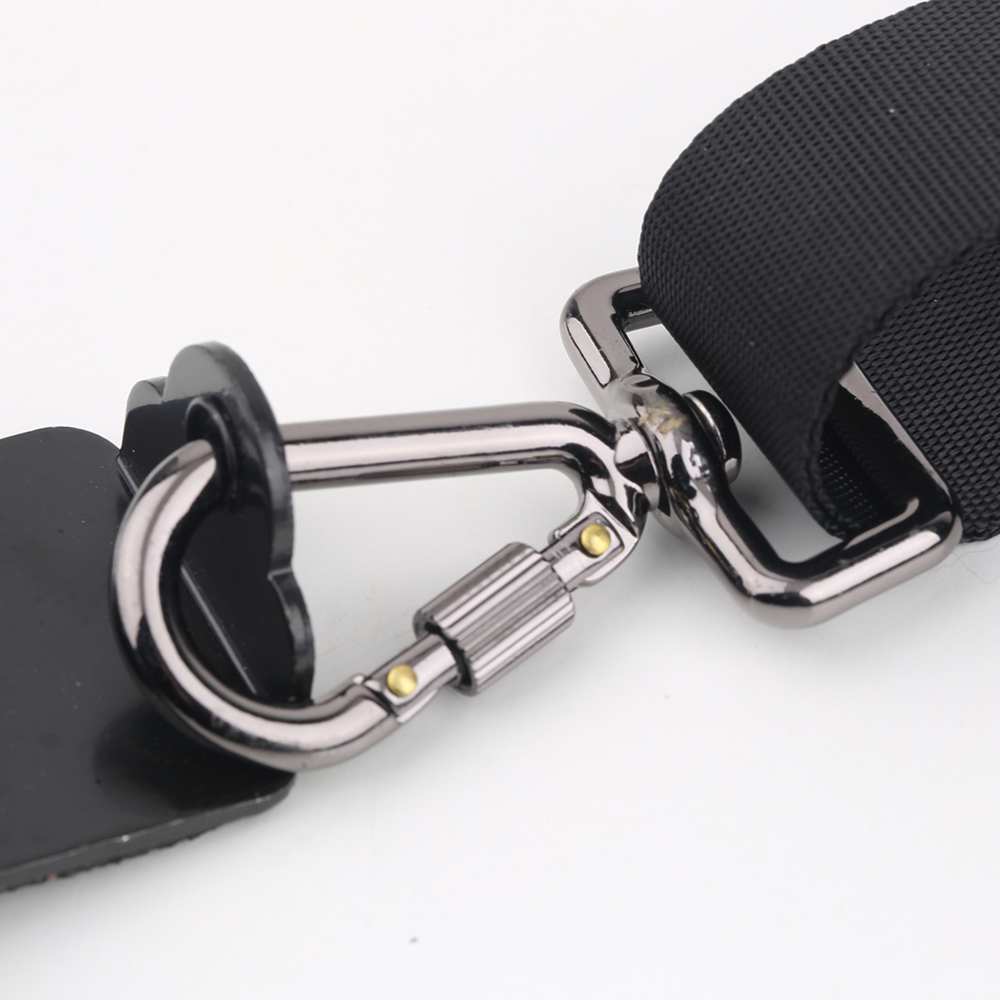DJI Mic Mini overview: the tiny wi-fi mic to beat for smartphone-first content material materials creators
DJI Mic Mini: one-minute overview
You’re hardly in want of decisions must you’re trying to find a model new wi-fi mic. My present favorite is the DJI Mic 2, which is no doubt one of many best wi-fi mics within the market, boasting pro-quality choices akin to 32-bit float audio. Nonetheless, for lots of content material materials creators, notably those who shoot largely with a smartphone, the Mic 2 is overkill. That’s the place the Bluetooth-equipped DJI Mic Mini steps in: it’s a smaller, simpler and cheaper completely different, with the equivalent DJI reliability that I’ve come to grasp over years of using its devices.
The Mic Mini is positively tiny, weighing merely 0.35oz / 10g (with out magnet), and it pairs merely with smartphones and cameras for increased prime quality audio on the fly. Oh, and it’s half the value of the Mic 2.
Its pure rival is the simply recently launched Rode Wi-fi Micro; nonetheless Rode’s new wi-fi mic is only for smartphones, whereas the Mic Mini might be utilized with cameras too, by the use of its 3.5mm jack, which means it’s further versatile. It isn’t a sweeping victory for the Mic Mini, though – must you’re solely going to shoot with a smartphone, the Rode Wi-fi Micro is probably the upper determine on account of its receiver is tiny and sits flush alongside the underside of your cellphone, whereas the Mic Mini’s receiver stands out awkwardly.
Audiophiles will perhaps favor the Mic 2 over the Mic Mini too, not just for its skilled audio prime quality with forgiving 32-bit float performance, nevertheless on account of the transmitters operate built-in storage and might be utilized independently, while you’ll be able to monitor ranges on the receiver’s LCD contact present for peace of ideas.
Having used all three of the above mics extensively, I’d personally go for the Mic Mini. The audio prime quality from all three is implausible, nevertheless for outright ease of use, value, reliability, and versatility for telephones and cameras, it’s the one which ticks all the containers. DJI has created one different dependable wi-fi mic; and perception me, reliability is an unsung attribute. I’ve ditched many various wi-fi mics for letting me down at important moments, leaving me with out right audio. I’d don’t have any such points with the Mic Mini, and it earns my five-star seal of approval.
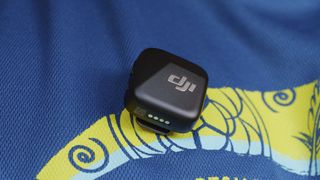
DJI Mic Mini: value and launch date
- $169 / £145 / AU$245 for the compete package deal with 2x mics, receiver and charging case
- Components accessible individually
- Accessible now
DJI sells the Mic Mini components individually however as well as as a whole package deal, whereas the Rode Wi-fi Micro is a whole package deal solely, and it is good to decide on the USB-C or Lightning receiver mannequin.
The Mic Mini transmitters (mics) might be present in Infinity Black or Arctic White. One transmitter costs $59 / £49 / AU$69, a transmitter with receiver costs $89 / £79 / $AU125, whereas the entire package deal, which contains two transmitters, a receiver and a charging case, costs $169 / £145 / AU$245. The entire package deal is perhaps your best guess must you’re starting from scratch.
The receiver is related to a cellphone using a USB-C connector, nevertheless must you’re using an iPhone with Lightning port you’ll should purchase the adapter individually for $19 / £19 / AU$39. When connecting to a digicam, you use a 3.5mm jack instead.
The itemizing value for the package deal is rather like that of the Rode Wi-fi Micro, whatever the Mic Mini’s bigger versatility – it’s roughly $15 / £10 / AU$20 better than Rode’s offering – whereas it’s spherical half the value of DJI’s Mic 2. I really feel it’s fantastic value.
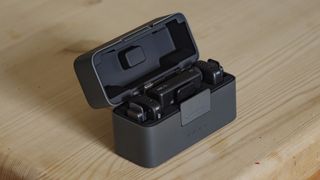
DJI Mic Mini: specs
| Dimensions | 26.55 x 26.06 x 15.96mm (L x W x H) |
| Weight | 10g (transmitter, with out magnet) |
| Range | 400m |
| Connectivity | Receiver: USB-C / Lightning, 3.5mm jack |
| Bluetooth | Positive |
| Battery | 11.5 hours (transmitter), 10.5 hours (receiver), as a lot as 48 hours with completely charged case |
| Noise cancelling | Two-level, auto |
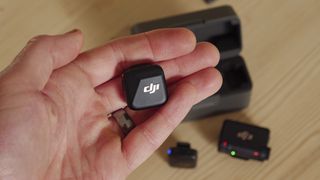
DJI Mic Mini: Design
- Tiny, discreet and accessible in black or white
- Simple clip or magnetic attachment
- Receiver with handbook audio ranges obtain, nevertheless no monitoring
The neat issue about DJI’s Mic Mini is that there are a selection of strategies chances are you’ll hook up together with your cellphone or digicam, and several other different strategies to buy; specific particular person components, a mic and receiver package deal, or the entire package deal which contains two mics (with magnets), one receiver, a charging case, plus wind muffs for the mics.
I had the entire package deal for this overview with USB-C connector, though technically you solely desire a single mic to get going with the Mic Mini on account of it could properly hook up together with your cellphone by the use of Bluetooth. For handbook administration of audio ranges, plus the added stability and richer audio prime quality, I favor connecting a cellphone to the mic by the use of the Mic Mini receiver, considerably than relying on Bluetooth.
The mics, moreover often known as transmitters, are tiny and easily droppable, nevertheless they join merely to garments using the built-in clip, or the magnetic mount, one half of which fixes to the once more of the clip, with the alternative half going inside your jacket or associated – DJI is conscious of learn how to make a powerful magnet with a reliable keep. To ensure that you a discreet mic in your photos, you’ll battle to find a smaller completely different, plus you can purchase the mics in black or white to combine in with garments.
When using a digicam, chances are you’ll slot the receiver into the digicam’s hotshoe / coldshoe after which be a part of it using a 3.5mm jack (the cable is obtainable). The receiver is an efficient match for cameras, nevertheless it is slightly awkward with a cellphone when related by the use of the cellphone’s USB-C / Lightning port, on account of it stands out heaps and the connection feels considerably unfastened (see image below).
The receiver is a simpler offering as compared with the one you get with the Mic 2. It incorporates a power button, pairing button, 3.5mm jack and a ±12db audio stage dial. That’s it. The Mic 2 receiver incorporates a major LCD contact present by the use of which you may monitor audio ranges for every mics and make further superior audio modifications. The bulkier Mic 2 transmitters moreover operate built-in storage, and might be utilized independently of your digicam of choice, or used as a backup machine.
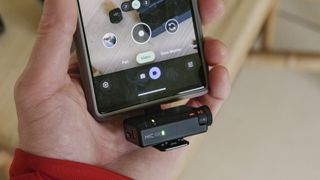
DJI Mic Mini: Effectivity
- Two-level noise low cost, and Automated Limiting to cease audio clipping
- 11.5 hours battery life (transmitter), 10.5 hours battery life (receiver)
- Omnidirectional audio and as a lot as 400m fluctuate
The place DJI’s wi-fi mics differ proper right here is that the pricier Mic 2 choices 32-bit float audio which will further efficiently stay away from clipping when your audio abruptly will get loud, and inside storage for direct recording in an effort to make use of it independently of a digicam or as a backup, whereas its receiver incorporates a present to permit you to monitor audio ranges.
The Mic Mini is a loads simpler machine, with its receiver offering major handbook ±12db audio stage administration, nevertheless in every other case it’s truly for people who want the mic to grab fantastic prime quality audio with minimal fuss.
I used the Mic Mini full package deal over quite a lot of weeks and situated it to be totally reliable and glitch-free, irrespective of cellphone or digicam I paired it with. It’s transmission fluctuate is rated as a lot as 400m (with clear line of sight), which is a lot adequate for any conceivable state of affairs – I’ve certainly not been even close to that distance from my digicam when recording audio wirelessly.
As for audio prime quality, I’ve recorded clips using a Bluetooth connection and the receiver inside the quiet indoors, outside inside the wind, and in noisy environments, and usually the Mic Mini captures clear audio in any of those eventualities. Vocals aren’t pretty as rich as with the Mic 2, nevertheless for 99% of people the excellence won’t be noticeable. It’s essential to additionally observe that audio drops from 24-bit to 16-bit must you be a part of by the use of Bluetooth, so there’s not pretty the equivalent richness in vocal prime quality.
Having such comparatively restricted administration over audio settings was considerably disconcerting at first, notably as compared with using the Mic 2, nevertheless the true plus to the Mic Mini is its sheer simplicity – chances are you’ll rely on its connectivity and two-level noise low cost to do the job, along with the one-touch denoise administration when in notably loud environments.
What I didn’t do for this test was pair the Mic Mini package deal with a DJI digicam, such as a result of the DJI Osmo Pocket 3 – a top-rated vlogging digicam – or the Osmo Movement 5 Skilled. Doing so affords further benefits courtesy of the DJI ecosystem – for one, the cameras have a built-in receiver, so that you simply solely desire a transmitter from the Mic Mini package deal. I’ve beforehand paired the Mic 2 with the Osmo Pocket 3 and situated the experience totally seamless, so must you’re using a DJI digicam it’s smart to go for a DJI mic over rivals.
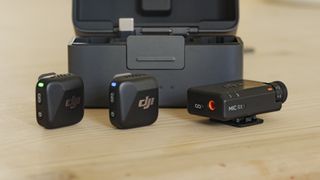
Should I buy the DJI Mic Mini?
Buy it if…
Don’t buy it if…
DJI Mic Mini: moreover ponder
| Header Cell – Column 0 | DJI Mic Mini | Rode Wi-fi Micro | DJI Mic 2 |
|---|---|---|---|
| Dimension | Transmitter: 26.6 x 26.1 x 16mm (L x W x H)Receiver: 46.5 x 29.6 x 19.3mm (L x W x H) | Transmitter: 40 x 27 x 17mm (L x W x H)Receiver: 44 x 24 x 9mm (L x W x H) | Transmitter: 46.1 x 31 x 21.8mm (L x W x H)Receiver: 54.2 x 28.4 x 22.5mm (L x W x H) |
| Weight | 10g (transmitter, with out magnet) | 12g (transmitter, with out magnet), 102g for your complete package deal | 28g (transmitter, with out magnet) |
| Transmission fluctuate | 400m | 100m | 250m |
| Connectivity | Receiver: USB-C or Lightning, 3.5mm jack | Receiver: USB-C or Lightning | Receiver: USB-C, 3.5mm jack |
| Battery | 11.5 hours (transmitter), 10.5 hours (receiver), as a lot as 48 hours with completely charged case | 7 hours, plus two further costs from the completely charged case for a whole of 21 hours | 6 hours, plus two further costs from the completely charged case for a whole of 18 hours |
| Audio | 24-bit (drops to 16-bit by the use of Bluetooth) | 24-bit | 32-bit float, 24-bit |
| Noise cancelling | Two-level, auto | No | AI |
| Bluetooth | Positive | No | Positive |

How I examined the DJI Mic Mini
- Used for quite a lot of months
- Paired with cameras and smartphones
- Used Bluetooth and receiver connection methods
I’ve been using the DJI Mic Mini on and off for months, every with mirrorless cameras similar to the Panasonic Lumix GH5 and smartphones such as a result of the Google Pixel 6. I’ve paired the Mic Mini to a cellphone using Bluetooth and by the use of the receiver related to my cellphone. I’ve by no means used the Mic Mini with DJI cameras such as a result of the Osmo Pocket 3 and Osmo Movement 5 Skilled (though I’ve used the Mic 2 with them), for which the compatibility is even easier given they every operate a built-in receiver.
I’ve made sure to test the mic in quite a lot of environments: the quiet of indoors, in nonetheless outdoor circumstances and in wind, and in noisy areas too, with and with out denoise utilized. I’ve moreover been ready to judge it on to the Rode Wi-fi Micro which I was testing on the same time.
